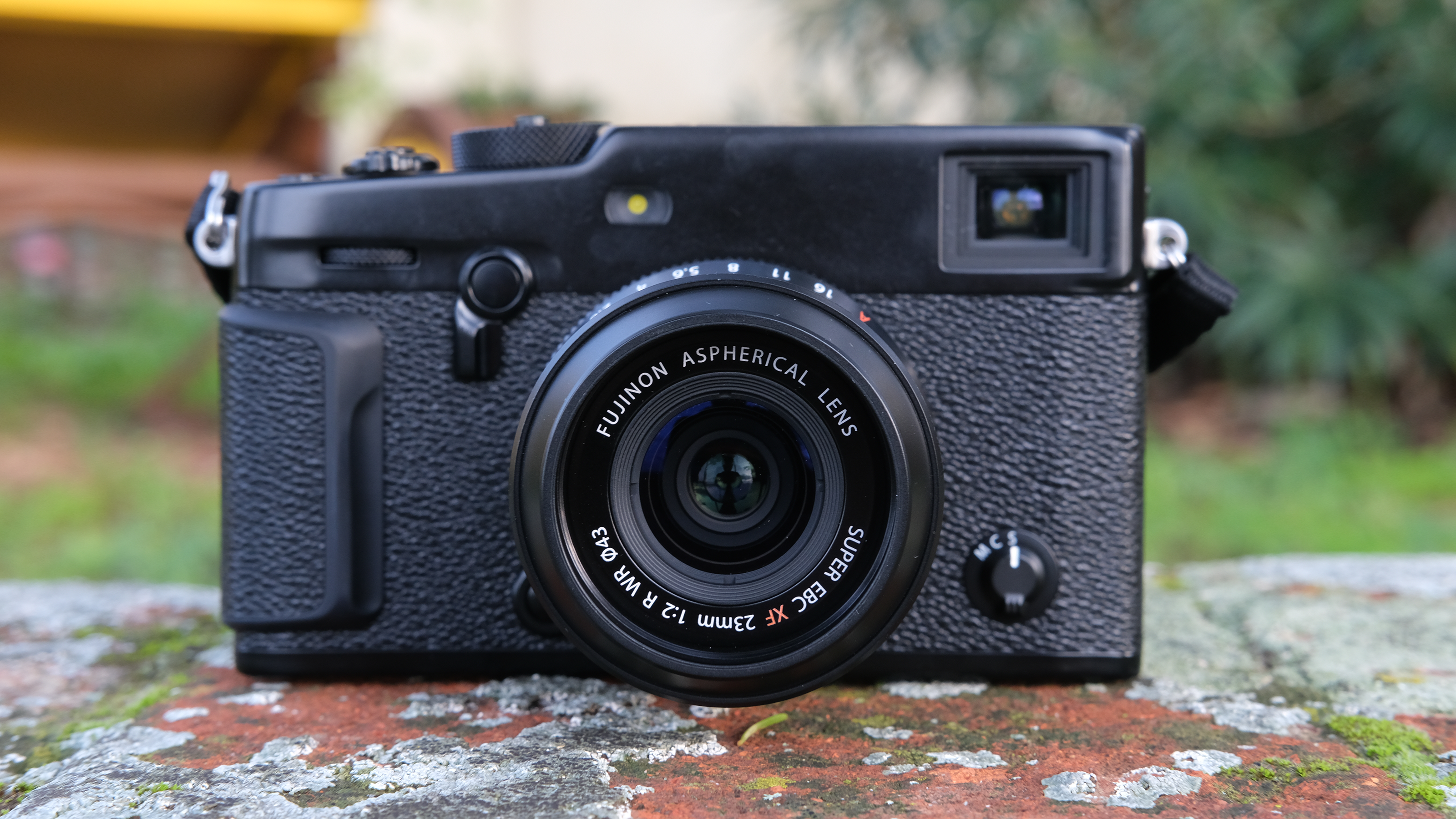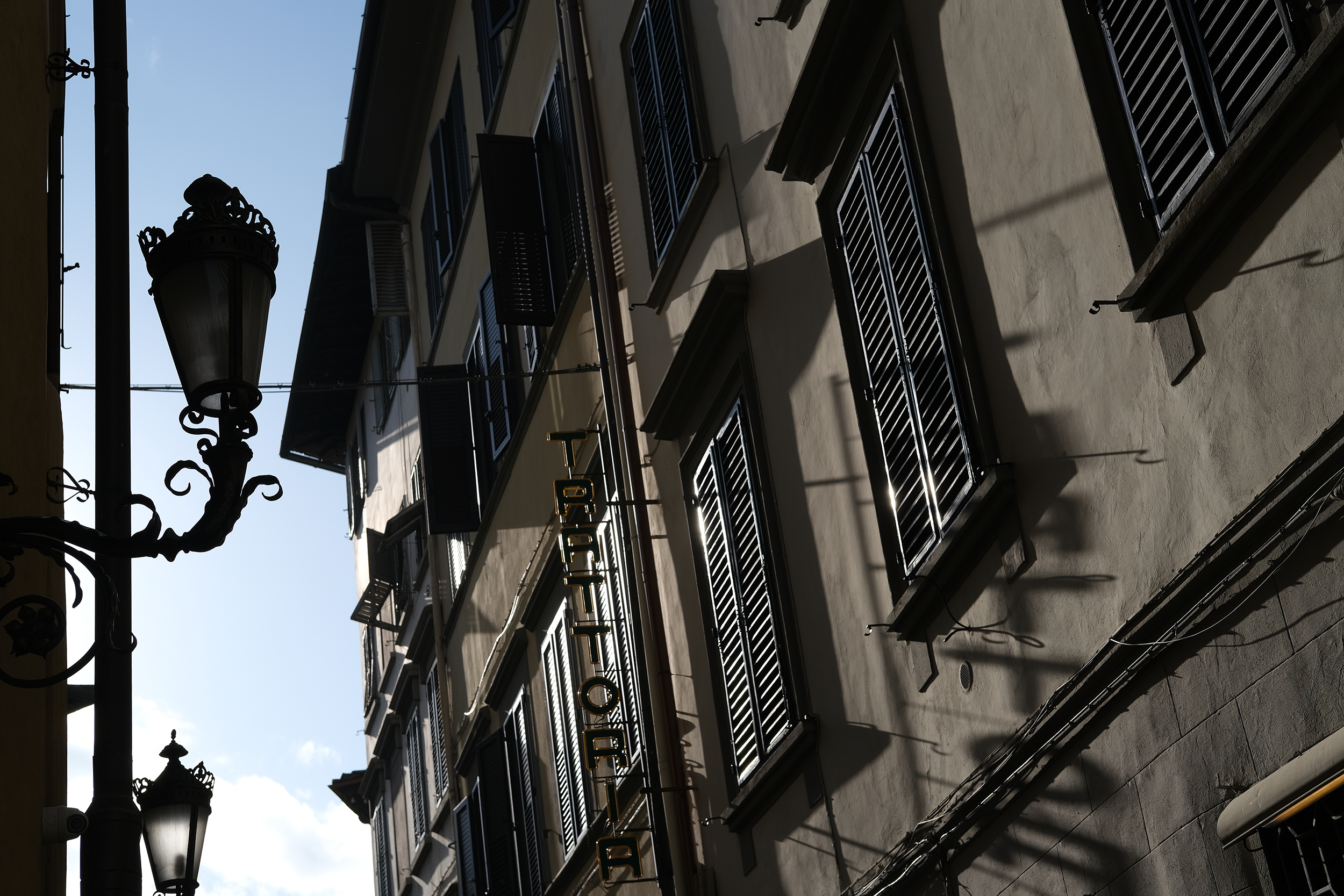Early Verdict
If you’re prepared to embrace its quirks, the X-Pro3 is shaping up to be one of the best street photography cameras you can buy. It's a strong stills performer, and features like the hybrid viewfinder and ‘hidden LCD’ give it a unique (if polarizing) mirrorless shooting experience. Those who don’t have a soft spot for rangefinder or film cameras, though, will be better off with more conventional equivalents like the Fujifilm X-T3 or Sony A6400.
Pros
- +
Unique shooting experience
- +
Improved hybrid viewfinder
- +
Weatherproof design
Cons
- -
Limited, unusual rear display
- -
More expensive than the X-T3
Why you can trust TechRadar
Today’s mirrorless cameras have helped hobbyist shooters take their shooting to new heights, but some would argue that they also lack the soul and charm of their film forebears – and if you're one of those people, then the new Fujifilm X-Pro3 could be for you.
The successor to the popular Fujifilm X-Pro2, the X-Pro3 is still an APS-C mirrorless camera that offers the kind of rangefinder-style shooting experience long favored by street photographers – except this time Fujifilm has doubled down on the X-Pro’s eccentricities to create a camera that’s completely unique at this price.
The X-Pro3 brings three big changes to the series’ design. Along with an upgraded version of its hybrid viewfinder – which handily lets you switch between electronic and optical modes – there are also two new scratch-resistant, titanium versions of the camera that cost extra.
The boldest and potentially the most polarizing addition, though, is a new ‘hidden’ LCD screen. To avoid distracting you from viewfinder-based shooting, this screen folds inwards to face the X-Pro3’s body. You can still pull it down to see your shots or shoot from low angles, but the idea is that you'll keep this tucked away and spend your shooting time in the viewfinder.
Is this a bold, laudable move that takes the X-Pro series to a new level? Or has Fujifilm gone too far in its efforts to deliver a retro photographic experience?
Fujifilm X-Pro3 release date and price

The availability and price of the Fujifilm X-Pro3 depends on which version you fancy. The standard Classic Black X-Pro3 (body-only) price is $1,699.99 / £1,699.99 / AU$2,699, with shipping starting on November 28.
If you’d prefer the scratch-resistant DURA versions in Black or Silver, you’ll need to pay an extra $300 / £180 / AU$300 and wait a little longer. Those models will cost $1,999 / £1,879 / AU$2,999 and will go on sale from mid-December (although if you're in Australia you'll need to wait until late December).
Sign up for breaking news, reviews, opinion, top tech deals, and more.
Build and handling
The X-Pro3’s minimalist design and retro flourishes make it one of the most desirable cameras you can buy right now – but that doesn’t mean Fujifilm has gone for gimmicks or cheap nostalgia here.
Every decision, from the tactile dials to that ‘hidden LCD’, has been made to guide you towards a very particular shooting experience – one that harks back to the viewfinder-based simplicity of film cameras.
Not every design feature is a success. While the electronic viewfinder (EVF) is a big improvement on the X-Pro2’s, with the resolution bumped to 3.69 million dots, it still has a relatively small magnification, which could be a slight issue if your eyesight isn’t what it once was.
That ‘hidden LCD’ is also a little polarizing. It folds inwards towards the camera, to steer you away from reflexively looking at the screen to review your images and tweak settings.
You can pull it down to help with waist-level shooting, so it’s not completely out of bounds for composing shots. And on the back of this screen when it's folded in is a secondary LCD that shows your basics shooting settings or the film simulation you’re shooting in, which are charmingly represented by a graphic of the film logo that inspired them.
That said, the X-Pro3 is certainly a long way from offering the flexibility of cameras like the Olympus OM-D EM-5 Mark III, which has an articulated screen that moves in virtually every possible direction.

Initially we had reservations about this ‘hidden LCD’, but after a few hours on the street we came to appreciate the effect it had on our stills shooting. There’s something to be said for a camera that encourages you to stay engaged with the scene in front of you, rather than reflexively checking your shots on a screen.
That said, this does demand a certain confidence in both your technique and your decision-making (hence the ‘Pro’ name), and reduces the X-Pro3’s appeal for those who want to go beyond street and documentary shooting and explore other genres, such as studio photography.
You also have to think about how much you really need the option of an optical viewfinder. This can bring benefits, such as being able to see around the scene to anticipate action entering the frame, but we found ourselves mostly using the electronic viewfinder (EVF), which meant we may as well have been shooting with the cheaper Fujifilm X-T3.

Features
The X-Pro3 is like a Fujifilm X-T3 in a rangefinder body. The two cameras share the same 26.1MP sensor and X Trans 4 processor combination, which means their performance is nigh-on identical.
Beyond the X-Pro3’s obvious differences – its hybrid viewfinder, ‘hidden’ LCD and more minimalist design – there are a few smaller variances that might sway you either way.
On the stills side, Fujifilm has introduced a few new processing options for your images, of which the most notable is the Classic Neg film simulation. If you’re not familiar with these simulations, you can think of them as subtle filters that recall the looks of certain brands of film.

They’re a real bonus if you fancy adding some atmosphere to your shots without laborious editing, and Classic Neg is another great addition that brings a cool, contrasty look reminiscent of Superia film. You can also now control the level of contrast in these film simulations on the X-Pro3 thanks to a new ‘clarity’ option.
While the X-Pro3 brings a few minor treats for stills shooters, its video powers aren’t quite up to the level of the X-T3. Its continuous 4K video recording time is limited to 15 minutes, there are no 10-bit or 400Mbps options, and the Fujifilm X-T3 has a more flexible screen.
Aside from these differences, though, the X-Pro3 shares the same shooting features as its older sibling, including 11fps burst shooting (or 30fps is you’re prepared to use the electronic shutter with a crop) and the X Series’ fast, reliable autofocus system.
Image quality and performance
As you’d expect from a camera that shares the same sensor and processor as the excellent Fujifilm X-T3, the X-Pro3’s image quality is very impressive, even when shooting at relatively high ISOs in low light.
We haven’t yet been able to inspect to inspect the X-Pro3’s raw files, so all of the images you see here are in-camera JPEGs with default noise reduction applied. But they do show the X-Pro 3’s versatility, particularly when you embrace its long list of film simulation modes.

The camera’s metering system generally did a good job of judging exposures, with the only weak spot appearing to be a tendency towards overexposing when the frame included bright objects; this wasn’t anything that a quick tweak of the exposure compensation dial couldn’t fix though.
Fujifilm’s much-improved Face and Eye detection worked well too, tenaciously sticking to targets, as long as they were relatively close. Sony still has the edge when it comes to tracking autofocus and Animal Eye AF, but the X-Pro3 has a very solid AF system that works even in fairly gloomy conditions.

It’s these film simulations that give the X-Pro3 a small boost over rival cameras like Leica CL, even if they might be sniffed at by those who’d prefer to develop their own visual style rather than use off-the-shelf looks.
The contrasty Classic Neg simulation is a great new addition to an arsenal that includes the more vibrant Velvia and cinematic Eterna, plus the grainy black-and-white Acros.
Fujifilm X-Pro3 sample images



Fujifilm X-Pro3 sample images

Fujifilm X-Pro3 sample images

Fujifilm X-Pro3 sample images

Fujifilm X-Pro3 sample images

Fujifilm X-Pro3 sample images

Fujifilm X-Pro3 sample images

Fujifilm X-Pro3 sample images

Fujifilm X-Pro3 sample images

Fujifilm X-Pro3 sample images

Fujifilm X-Pro3 sample images

Fujifilm X-Pro3 sample images

Fujifilm X-Pro3 sample images
Early verdict

The Fujifilm X-Pro3 is undoubtedly a niche camera, but if you’re its target market – namely, a street photographer who wants a camera that mixes the best of modern and analogue shooting – then it might just be the best street sidekick around.
Spend a few hours with the X-Pro3, and its restrictive rear screen might just nudge you towards a more engaged, less self-absorbed way of shooting. It’s an eccentric camera, but not one that’s wilfully awkward, or lacking in modern safety nets like excellent autofocus or an electronic viewfinder.
With an all-rounder like the very similar Fujifilm X-T3 around, though, you will have to weigh up how much you really want that retro, film camera experience. If you don't ever see yourself using an optical viewfinder, or prefer to shoot a balanced diet of stills and video, then cameras like the X-T3 or a Sony A6400 make much more sense.
But, for those who want a unique hybrid of old and new, and don’t want to spend hundreds more on a Leica CL, the X-Pro3 might just be their new photographic soul mate.
- Check out our list of the best mirrorless cameras you can currently buy

Mark is TechRadar's Senior news editor. Having worked in tech journalism for a ludicrous 17 years, Mark is now attempting to break the world record for the number of camera bags hoarded by one person. He was previously Cameras Editor at both TechRadar and Trusted Reviews, Acting editor on Stuff.tv, as well as Features editor and Reviews editor on Stuff magazine. As a freelancer, he's contributed to titles including The Sunday Times, FourFourTwo and Arena. And in a former life, he also won The Daily Telegraph's Young Sportswriter of the Year. But that was before he discovered the strange joys of getting up at 4am for a photo shoot in London's Square Mile.
What is a hands on review?
Hands on reviews' are a journalist's first impressions of a piece of kit based on spending some time with it. It may be just a few moments, or a few hours. The important thing is we have been able to play with it ourselves and can give you some sense of what it's like to use, even if it's only an embryonic view. For more information, see TechRadar's Reviews Guarantee.
